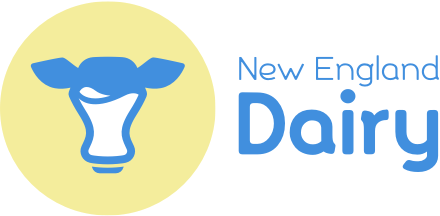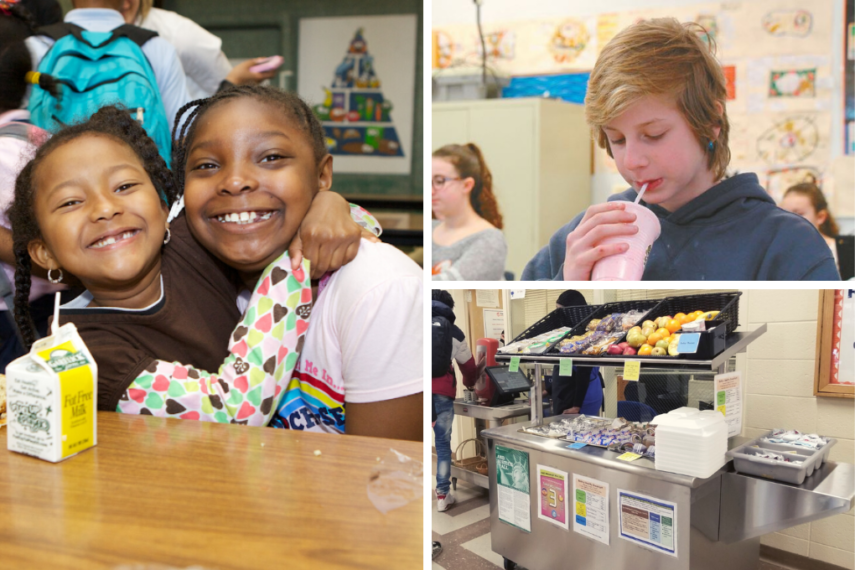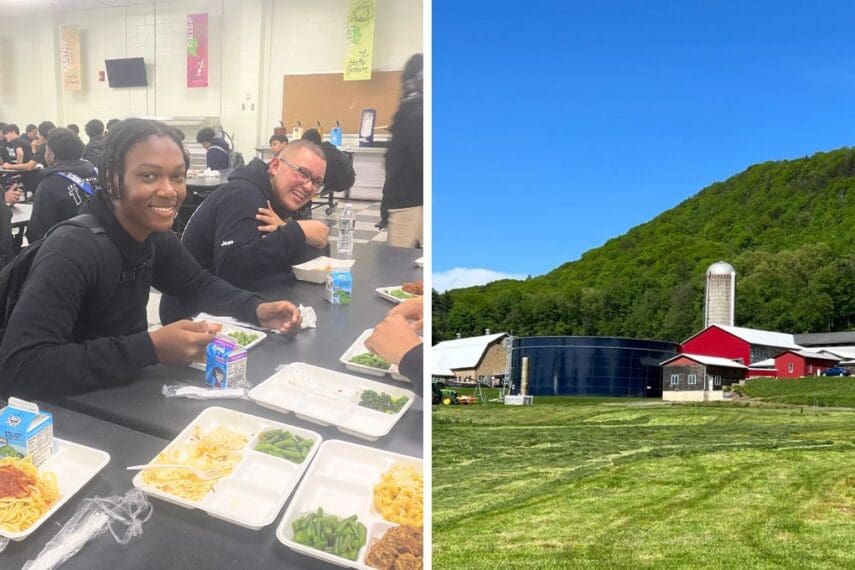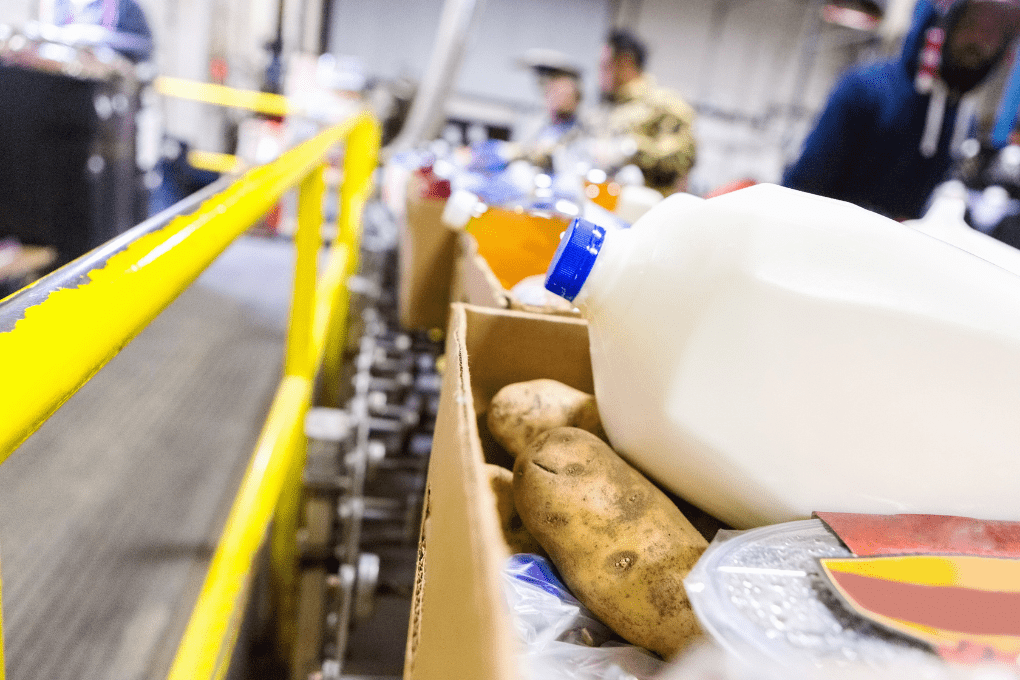
Here’s a sobering statistic that is cause for pause: more than a half-million Americans die each year from dietary-related diseases such as heart disease or diabetes. These diseases disproportionately impact communities experiencing food insecurity, according to the U.S. Department of Agriculture (USDA).
Defined as limited or uncertain access to food, food insecurity impacted 44 million Americans in 2022 alone. Food banks and pantries, government-backed programs [including the Supplemental Nutrition Assistance Program (SNAP) and the Special Supplemental Nutrition Program for Women, Infants, and Children (WIC)], and nutrition education efforts have all helped to lessen the impact of food insecurity.
Not Just Food, Nutritious Food
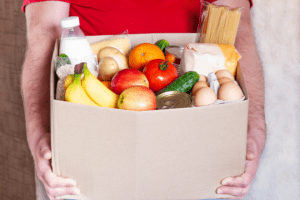
Expanding on these efforts is a growing movement to promote and prioritize not just any food but nutritious food sources—including dairy—for food insecure populations. This concept of “nutrition security,” or providing equitable and consistent access to healthy and affordable food sources essential for optimal health and well-being, has become a national priority of the USDA. Local organizations and partners with New England Dairy have also embraced this concept by expanding access and educational efforts around nutritious foods.
“The population we serve is more vulnerable to nutrition-related diseases,” says Laura Ortiz, MS, RD, LDN, manager of nutrition at the Greater Boston Food Bank. Via its food distribution efforts, the food bank helps nourish more than a half-million people each month. “By focusing on nutrition security … we are able to increase access to nutritious foods and help with chronic disease management and prevention.”
Ninety-five percent of the food bank’s inventory meets its “high nutritional standards,” says Ortiz, adding that these standards ensure most foods are low in sodium, saturated fat, and added sugars. “By providing these foods, it helps decrease the risk of developing nutrition-related diseases. And dairy is one of those items. It is one of the top-requested items at pantries alongside other proteins and produce. The people want dairy and it’s something that I want to promote and increase access to because it provides the nutrients that can help manage or prevent a nutrition-related disease.”
Access to Highly Nutritious Dairy
Extensive research continues to underscore dairy’s impact on health; consuming nutrient-rich milk and milk-based products have been associated with lower blood pressure, reduced risk of both cardiovascular disease and type 2 diabetes, and improved bone health. To maximize dairy’s benefits, the Dietary Guidelines for Americans recommends three, daily servings of dairy for most people.
Expanding Offerings
In an effort to increase access to highly nutritious and sought after perishable products like produce and dairy, the Greater Boston Food Bank has initiated Project C.O.L.D., or Creating Optimal Logistics for Distribution. This aptly named endeavor will increase the food bank’s refrigerated storage space in an effort to distribute an additional eight to 10 million pounds of perishable products yearly.
At the food pantry level, some organizations are embracing the idea of nutrition security via increased offerings that support well-balanced eating. “We have a fair amount of fresh produce, proteins and meats, milk, and eggs,” says Ken Hale, Member Services & Resource Coordinator for Gather, a nonprofit addressing food insecurity by providing nutritious food via innovative distribution programs and public education. In January, Gather reached approximately 70,000 residents within its coverage area of New Hampshire and York County, Maine.
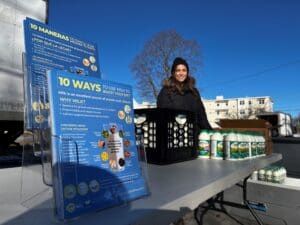
Meeting Dietary Needs
Following the COVID-19 pandemic, Hale says Gather has become increasingly reliant on purchasing nutrient-rich foods to meet the needs of its population. (Ortiz mirrored Hale’s comment, as the food bank now purchases 75 percent of its food.) Gather still receives donated foods and “rescue foods,” or foods that stores may not want on their shelves but are still edible.
Perishable items made available in Gather’s pantry include yogurt, cottage cheese, and other cheeses. “I’m seeing more people drawn towards these products,” says Hale. “There’s been more interest in other types of dairy [besides milk]. There’s more interest in yogurt products, such as packaged smoothies, drinks, and kids’ treats, now than there was years ago.” Both yogurt and cheese are considered nutrient-rich dairy options that can provide an array of health benefits.
Addressing Challenges
Linking customers who are unhoused with nourishing dairy foods has been a challenge, says Hale, since they may not have a traditional place to store perishable items. But Gather has developed a workaround to address this issue.
“Our program allows people to shop the pantry once a month, but we make an exception for people who are unhoused,” says Hale. “We encourage them to come once a week, and it gives folks without full kitchens more flexibility to select what they need. It gives them more access to dairy foods that they would not otherwise have.”
Helping expand access to nutritious foods is Gather’s mobile markets, which brings dairy and other foods closer to the organization’s clients. Hale says Gather typically holds about 14 mobile markets weekly at schools, community centers, senior housing centers, and other locations.
Educating About Food Insecurity and Healthy Eating
While improving access to nourishing foods strengthens the concept of nutrition security, educational efforts promoting these foods also have its benefits. For instance, USDA’s Expanded Food and Nutrition Education Program (EFNEP) addresses food insecurity and other challenges via topics including diet quality, physical activity, and food safety for low-income adults and youth nationwide. Similarly, SNAP has an educational arm (SNAP-Ed) to help promote healthy eating and cooking for low-income recipients receiving SNAP benefits for food purchases.
Local Efforts
In New England, local educators view dairy foods as vital for bolstering the concept of nutrition security. “In our efforts, we’re always promoting that dairy foods provide protein and fat to aid satiety,” says Heather Peracchio, MS, RD, CDN, assistant Extension educator at the University of Connecticut’s Department of Extension. Peracchio is also a local SNAP-Ed and EFNEP supervisor. “If you have limited income or limited access to foods, eating these types of foods can help you feel full. They’re also packed with protein, calcium, and essential nutrients. If your [food] intake is limited, you’d want to make sure the foods you are consuming are nutrient-dense.”
Peracchio adds that local efforts have addressed both food insecurity and nutrition security in unique ways. A collaboration between the Extension and the Danbury Farmers Market in Connecticut has helped improve equitable access to healthy, local food. “Anyone that comes to the nutrition education classes [at the farmers market] receives funds to buy local foods there,” says Peracchio. “I’d like to think that’s one way we’re improving nutrition security. We’re not just talking about nutrition education but giving some purchase power to some of the residents.”
Digital Outreach
Utilizing social media and online tools, such as UConn’s community nutrition page, has been helpful in sharing nutrition resources and endeavors to wider audiences, adds Peracchio. She and others interviewed for this story added that regardless of a person’s socioeconomic status, nourishing foods should be made available to all.
“We all believe that access to healthy food is a human right,” says Ortiz with the Greater Boston Food Bank. “At the end of the day, everyone deserves to eat a nutritious meal.”
Fred Durso, Jr., is a registered dietitian nutritionist (RDN) and award-winning journalist. He worked for more than a decade at various publications and nonprofits before embarking on a new career as an RDN. He currently works as a freelance writer and outpatient RDN in Massachusetts.
